Grand Activation Extreme HGA-6000 AC Cord by Clement Perry
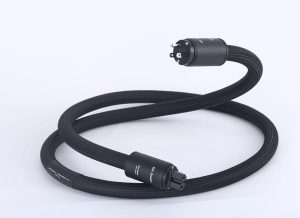
 Grand Activation Ltd is a British-borne manufacturer of specialty audio cables and accessories located southwest of England in Bristol, UK. Luke Whitehead, the company’s PR rep, has been gracious enough to offer me the opportunity to review their newest cable line. Grand Activation Ltd officially launched in 2020, and Brown has the Herculean task of trying to make a name for the GA brand in Europe and in the USA.
Grand Activation Ltd is a British-borne manufacturer of specialty audio cables and accessories located southwest of England in Bristol, UK. Luke Whitehead, the company’s PR rep, has been gracious enough to offer me the opportunity to review their newest cable line. Grand Activation Ltd officially launched in 2020, and Brown has the Herculean task of trying to make a name for the GA brand in Europe and in the USA.
And for good reason.
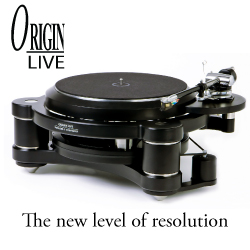 How many of us have already owned cables that boasted other-worldly technologies, cryogenic treatments, and six-nine silver wiring employing sophisticated windings that guarantee extraordinary performance? I know I have. Most of these brands worked well until something better came along and improved over their performance. When Whitehead informed me that Grand Activation Ltd uses a proprietary technology called MMAT (Metal Molecular Activation Technology) that increases the flow of electrons, thus improving dynamic range and helping reduce distortions on an unprecedented level, I was skeptical about which MMAT he was referring to. Was this perhaps the same company that I’m familiar with called Quantum Science Audio? Whitehead claimed they know of the QSA technology but use their own special blend of MMAT, that admittedly isn’t on the level QSA offers. However, based on my experience with all seven levels of QSA, any level of MMAT treatment is special – especially if used on a product employing as much high-purity, oxygen-free copper as in an AC power cord. I inquired about the opportunity to test their Grand Activation HGA-6000 reference AC cords. Thankfully, they agreed.
How many of us have already owned cables that boasted other-worldly technologies, cryogenic treatments, and six-nine silver wiring employing sophisticated windings that guarantee extraordinary performance? I know I have. Most of these brands worked well until something better came along and improved over their performance. When Whitehead informed me that Grand Activation Ltd uses a proprietary technology called MMAT (Metal Molecular Activation Technology) that increases the flow of electrons, thus improving dynamic range and helping reduce distortions on an unprecedented level, I was skeptical about which MMAT he was referring to. Was this perhaps the same company that I’m familiar with called Quantum Science Audio? Whitehead claimed they know of the QSA technology but use their own special blend of MMAT, that admittedly isn’t on the level QSA offers. However, based on my experience with all seven levels of QSA, any level of MMAT treatment is special – especially if used on a product employing as much high-purity, oxygen-free copper as in an AC power cord. I inquired about the opportunity to test their Grand Activation HGA-6000 reference AC cords. Thankfully, they agreed.
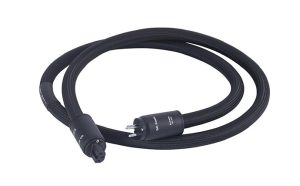
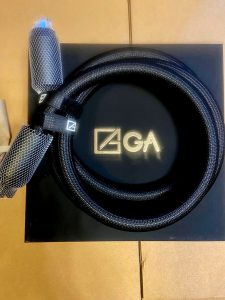

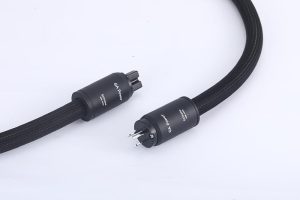
According to Whitehead, GA produces only two AC cords in the GA HGA-2000 ($2,500) and GA HGA-6000 ($5,000), which serves as their current reference and is the subject of this review. The company mentioned they plan to release speaker cables and interconnects in 2025. Within ten days, three GA HGA-6000 AC cords arrived via international courier at my front door. Nicely packaged in individual black boxes with the GA logo inscribed on the top, each cord is thick, heavy, and nicely designed with GA Power highlighted in bold white on its aluminum plug and IEC. This gives its smooth black Nylon mesh jacket a great look and expensive feel, making its asking respectable. Mine came in two-meter length, which proved perfect for their application: a pair of Behold BPA-768 amplifiers and Behold APU-768 preamp.
The GA HGA-6000 AC cords were replacing a pair of excellent-sounding Bella Sound AC cords that, over the years, have acquitted themselves time and again to be among the most musical I own. I used the super quick and nimble NanoFlo AC cords on the preamp, which infuse power into whatever they’re plugged into. The NanoFlo elevates my system’s speed and transient attack. When it’s an all-Bella Sound, the system begins to sound just a tad sluggish. On the other hand, too much NanoFlo and the sound becomes a little too forward and hence aggressive. The perfect blend, I’ve discovered, has been the Bella Sound on the amps and NanoFlo on my digital source and AC conditioner. Knowing this, thinking of what type of sonic character the GA HGA-6000 AC cords would bring was heavy on my mind.
 Of course, burn-in had to occur before any serious listening would happen. Curiously, I couldn’t resist a short listen after installation and immediately noticed the GA HGA-6000 AC cords had the earmarks of the NanoFlo in terms of their dynamics and effervescence. Still, they seemed well-mannered and musical, like the Bella Sound. Going through a litany of songs, I was surprised at how the music presented itself with such presence and transparency without sounding forward or aggressive. I had to do a double take at my volume setting more than once due to the lack of hardness, glare, and shout-outs that horns can be infamous for. The sense of quiet and the lack of glare gave the music more dynamic prowess, allowing me to play at volumes I typically considered loud. Yet, the GA HGA-6000 AC cord’s excellent sonic composure was immediate. My intuition told me burn-in was necessary as a sense of stiffness stood out. As hard as it was, I gave the GA HGA-6000 AC cords 100 hours of burn-in to get them closer to their optimum performance.
Of course, burn-in had to occur before any serious listening would happen. Curiously, I couldn’t resist a short listen after installation and immediately noticed the GA HGA-6000 AC cords had the earmarks of the NanoFlo in terms of their dynamics and effervescence. Still, they seemed well-mannered and musical, like the Bella Sound. Going through a litany of songs, I was surprised at how the music presented itself with such presence and transparency without sounding forward or aggressive. I had to do a double take at my volume setting more than once due to the lack of hardness, glare, and shout-outs that horns can be infamous for. The sense of quiet and the lack of glare gave the music more dynamic prowess, allowing me to play at volumes I typically considered loud. Yet, the GA HGA-6000 AC cord’s excellent sonic composure was immediate. My intuition told me burn-in was necessary as a sense of stiffness stood out. As hard as it was, I gave the GA HGA-6000 AC cords 100 hours of burn-in to get them closer to their optimum performance.
Constant around-the-clock burn-in allowed me to listen more seriously after only one week. Almost immediately after tuning up, You Can Bring Me Flowers from Will Downing’s 2014 release “Euphoria,” I sat mesmerized by the calmness that went through my listening space. A well-balanced frequency bandwidth replaced this lack of force, shout, or forwardness. No frequency bumps of suck outs. All those little hidden figures started to appear out of nowhere; percussion strikes, guitar accents, and riffs were more coherent with better clarity and focus. Will Downing sounded more lifelike and less electrically/mechanically reproduced. The music had a sweeter top-end as the high-frequencies imparted even less glare than my previous reference AC cords. Bass instruments, whether acoustic/electric or kickdrum/floor tom-toms, possessed more excellent pitch definition and felt more dynamically charged. Because everything is so relaxed and sounds less forced, they become more realistically dynamic because they come from a less aggressive stance: One can finally relax and allow the music to happen.
 Contemplation is a song as fabulous as it is melancholy, initially penned by McCoy Tyner; here, trumpeter Ray Vega digs deep and introspectively on this 2004 remake from his “Squeeze Squeeze” CD. I’ve had this song on my playlist for over 20 years, and although an excellently recorded disc, through the GA HGA-6000 AC cords, it never sounded this resolute and engaging. There are some great solos on this song from saxophonist Bobby Porcelli and Igor Atalita on piano. But it’s Ray Vega’s fiery solo that brings it home for me. I admire the sound of Ray Vega’s trumpet on this date. His play is, no pun intended, contemplative, reflective, yet subtle and profoundly engaging. Through the GA HGA-6000s, Ray’s sound is prominent yet relaxed, bold, and expressively artistic. This excellently recorded disc, now 20 years old, sounds better than I
Contemplation is a song as fabulous as it is melancholy, initially penned by McCoy Tyner; here, trumpeter Ray Vega digs deep and introspectively on this 2004 remake from his “Squeeze Squeeze” CD. I’ve had this song on my playlist for over 20 years, and although an excellently recorded disc, through the GA HGA-6000 AC cords, it never sounded this resolute and engaging. There are some great solos on this song from saxophonist Bobby Porcelli and Igor Atalita on piano. But it’s Ray Vega’s fiery solo that brings it home for me. I admire the sound of Ray Vega’s trumpet on this date. His play is, no pun intended, contemplative, reflective, yet subtle and profoundly engaging. Through the GA HGA-6000s, Ray’s sound is prominent yet relaxed, bold, and expressively artistic. This excellently recorded disc, now 20 years old, sounds better than I 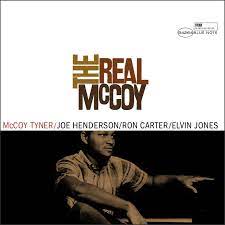 originally purchased in 2004. Excitedly, I looked in my library for the original recording by McCoy Tyner, entitled “The Real McCoy.” Although not nearly as well-recorded as Ray Vega’s release on Palmetto Records, “The Real McCoy” was recorded on Blue Note Records at the famous Van Gelder studios in the Spring of 1967, three months before the untimely passing of musical jazz giant John Coltrane. That makes this LP as musically noteworthy as it is essential because Contemplation sounds like an ode to the giant of that genre, John Coltrane. The album features two former bandmates from his historic quartet in McCoy Tyner and Elvin Jones (while Ron Carter on bass and Mr. Joe Henderson on tenor saxophone complete this quartet). Firstly, unlike any AC cord I’ve owned, the GA HGA-6000 AC cords gives this recording a sense of space, harmonic integrity, neutrality, and tonal density that belies its 1967 production date.
originally purchased in 2004. Excitedly, I looked in my library for the original recording by McCoy Tyner, entitled “The Real McCoy.” Although not nearly as well-recorded as Ray Vega’s release on Palmetto Records, “The Real McCoy” was recorded on Blue Note Records at the famous Van Gelder studios in the Spring of 1967, three months before the untimely passing of musical jazz giant John Coltrane. That makes this LP as musically noteworthy as it is essential because Contemplation sounds like an ode to the giant of that genre, John Coltrane. The album features two former bandmates from his historic quartet in McCoy Tyner and Elvin Jones (while Ron Carter on bass and Mr. Joe Henderson on tenor saxophone complete this quartet). Firstly, unlike any AC cord I’ve owned, the GA HGA-6000 AC cords gives this recording a sense of space, harmonic integrity, neutrality, and tonal density that belies its 1967 production date.
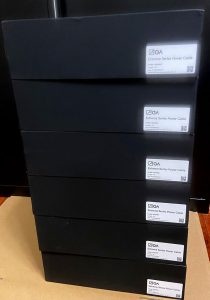
 Having lived with the GA HGA-6000 AC cords on my Behold amplifiers and preamp for over one month and fully aware of its sonic superiority, I ordered three more to complete my system needs since I was confident these would more than likely become my new reference AC cord. In short, the GA HGA-6000 cables, totally unknown to this listener, have exceeded my sonic expectations by a considerable margin. Based on their sonic excellence, I anticipated their performance on the Laufer Teknik Memory Player and Puritan AC conditioner (since replaced by the Inakustic 4500) in a way that made me feel like an audio-newby once again. In another couple of weeks, another pair of the GA HGA-6000 arrived and was installed. The only frustrating part was knowing I had to go another 150 hours of burn-in AGAIN before the GA HGA-6000 would perform at its optimum.
Having lived with the GA HGA-6000 AC cords on my Behold amplifiers and preamp for over one month and fully aware of its sonic superiority, I ordered three more to complete my system needs since I was confident these would more than likely become my new reference AC cord. In short, the GA HGA-6000 cables, totally unknown to this listener, have exceeded my sonic expectations by a considerable margin. Based on their sonic excellence, I anticipated their performance on the Laufer Teknik Memory Player and Puritan AC conditioner (since replaced by the Inakustic 4500) in a way that made me feel like an audio-newby once again. In another couple of weeks, another pair of the GA HGA-6000 arrived and was installed. The only frustrating part was knowing I had to go another 150 hours of burn-in AGAIN before the GA HGA-6000 would perform at its optimum.
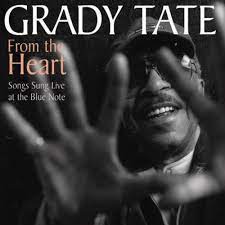 Of course, after another week of overtime work and other obligations, I eagerly returned to my upstairs listening room. One song I’ve been grooving on lately is Grady Tate’s live at the Blue Note rendition of Where Do We Start from his 2007 “From the Heart” CD (Halfnote Records). I always considered Grady Tate a great drummer, but I had no idea he was also a great vocalist. Where Do We Start ideally illustrates Tate’s timing and soulfulness. The first thing I did after listening was play it again. As good as a recording as I remembered “From the Heart” was, this exceeded my expectations. The first thing I noticed wasn’t so much how quiet everything was but how clear, spatially realistic, and well-defined the accompanying piano sounded. The GA HGA-6000s imparted transients that were so fast and so utterly natural that it made Mr. Tate appear as flesh and blood, as I’ve heard in a recording (reminiscent of
Of course, after another week of overtime work and other obligations, I eagerly returned to my upstairs listening room. One song I’ve been grooving on lately is Grady Tate’s live at the Blue Note rendition of Where Do We Start from his 2007 “From the Heart” CD (Halfnote Records). I always considered Grady Tate a great drummer, but I had no idea he was also a great vocalist. Where Do We Start ideally illustrates Tate’s timing and soulfulness. The first thing I did after listening was play it again. As good as a recording as I remembered “From the Heart” was, this exceeded my expectations. The first thing I noticed wasn’t so much how quiet everything was but how clear, spatially realistic, and well-defined the accompanying piano sounded. The GA HGA-6000s imparted transients that were so fast and so utterly natural that it made Mr. Tate appear as flesh and blood, as I’ve heard in a recording (reminiscent of 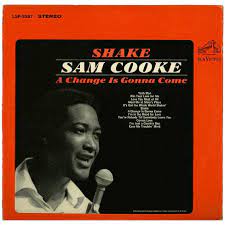 Bill Henderson’s classic Send in The Clowns). Ditto Sam Cooke’s (Somebody) Ease My Troubling Mind, Roberta Flack’s The First Time I Ever Saw His Face, and the eerily beautiful version of Quincy Jones’ Everything Will Change. What is unmistakably evident and remarkable is the lack of distortions and hardness that I would have defended with all my might before installing the GA HGA-6000s. However, with the inclusion of the GA HGA-6000s, I am forced to reconcile to the fact that there’s always room for improvement. The problem is, how much should this level of improvement cost? I have heard many products that cost more and have yet to live up to the quality of performance delivered here. Having my system’s components ensconced with Grand Activation GA HGA-
Bill Henderson’s classic Send in The Clowns). Ditto Sam Cooke’s (Somebody) Ease My Troubling Mind, Roberta Flack’s The First Time I Ever Saw His Face, and the eerily beautiful version of Quincy Jones’ Everything Will Change. What is unmistakably evident and remarkable is the lack of distortions and hardness that I would have defended with all my might before installing the GA HGA-6000s. However, with the inclusion of the GA HGA-6000s, I am forced to reconcile to the fact that there’s always room for improvement. The problem is, how much should this level of improvement cost? I have heard many products that cost more and have yet to live up to the quality of performance delivered here. Having my system’s components ensconced with Grand Activation GA HGA-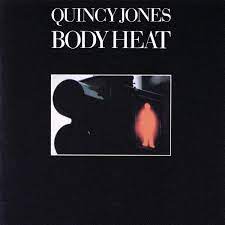 6000 AC cords has allowed me to enjoy the most crucial aspect of this hobby: musical enjoyment. Going back in time to such old recordings has been a sonic breakthrough for me because I formally believed old records sounded old. This is not true. I’ve discovered that many older recordings sound sonically superior to newer recordings for reasons I cannot understand.
6000 AC cords has allowed me to enjoy the most crucial aspect of this hobby: musical enjoyment. Going back in time to such old recordings has been a sonic breakthrough for me because I formally believed old records sounded old. This is not true. I’ve discovered that many older recordings sound sonically superior to newer recordings for reasons I cannot understand.
From years of experience, I constantly wondered about the Metal Molecular Activation Technology and what it could do elsewhere in the audio chain. The more I’ve installed it, the more glare, distortions, artifacts, and noises I find it removes. Based on this discovery almost five years ago, I remain in awe to experience the MMAT treatment when applied to an AC cord. Once again, I remind you that this technology, when applied to a mere fuse, has changed my perspective on audio entirely. One can only imagine the impact a heavy-duty wire like an AC power cord would have using a similar MMAT treatment.
Yes, my system has been sonically impacted in the most positive ways I couldn’t have imagined. I cannot wait to hear the company’s phono cables and interconnects when they become available in 2025. As it stands in the here and now, the Grand Activation GA HGA-6000 AC cords are the finest AC cords I’ve heard at their asking price (and maybe beyond). They are hereby nominated as my new reference AC cords and are highly recommended.


Specifications:
GA HGA-6000 AC cord: Price: $5,000 ea
Address:
PS 21 Prince Street BS1 4PH Bristol UK
Website: www.gapower.co.uk
Email: Info@gapower.co.uk
Tel:+44 7553856546
Stereo Times Masthead
Publisher/Founder
Clement Perry
Editor
Dave Thomas
Senior Editors
Frank Alles, Mike Girardi, Russell Lichter, Terry London, Moreno Mitchell, Paul Szabady, Bill Wells, Mike Wright, and Stephen Yan,
Current Contributors
David Abramson, Tim Barrall, Dave Allison, Ron Cook, Lewis Dardick, John Hoffman, Dan Secula, Don Shaulis, Greg Simmons, Eric Teh, Greg Voth, Richard Willie, Ed Van Winkle, Rob Dockery, Richard Doron, and Daveed Turek
Site Management Clement Perry
Ad Designer: Martin Perry





Be the first to comment on: Grand Activation Extreme HGA-6000 AC Cord by Clement Perry